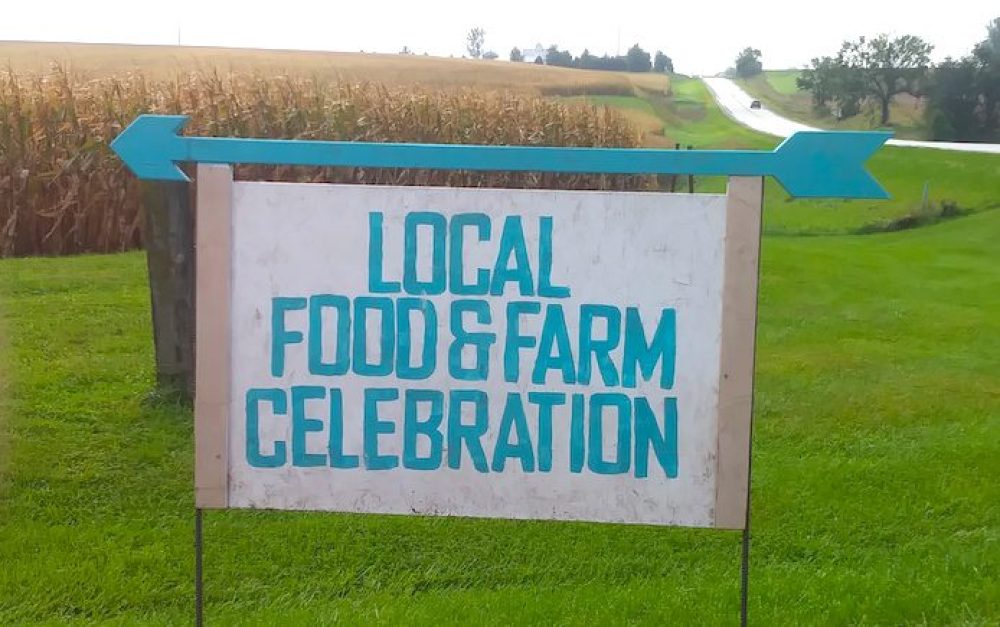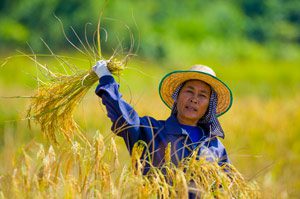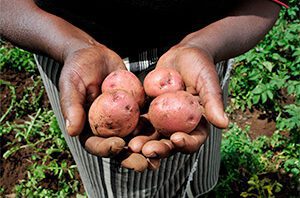In mid-August, I joined PAN as the organization’s new communications associate. Starting a new position is always an adjustment, and this one came with a move to Iowa, and as a Southern California girl who recently finished graduate school in México, the move to the Midwest was a big one!
In mid-August, I joined PAN as the organization’s new communications associate. Starting a new position is always an adjustment, and this one came with a move to Iowa, and as a Southern California girl who recently finished graduate school in México, the move to the Midwest was a big one!
Over the past couple of months I’ve been learning as much as I can about Iowa. In particular, I’ve been working to learn more about chemical intensive agriculture — and the alternatives Iowans are creating for a more sustainable and equitable food system.
Planting seeds at the local farmers’ market
For the first several weeks after my move, I was fortunate to spend some time staying with and shadowing PAN board chair and Iowa farmer Denise O’Brien, and spent my Thursday afternoons with three farmer families that were stationed weekly at the Atlantic farmers’ market.
The seasonal farmer’s market in Atlantic was created to address the fact that healthy and accessible food isn’t always available in rural towns. Some of the participating farmers expressed frustration, feeling that their actions to offer accessible, fresh produce were futile, as they often see low participation in the market by community members.
However, their intentions are to sow the seeds for access to affordable food that should be available to everyone.
Grassroots solutions, not corporate grandstanding
Meanwhile, local innovations and community engagement efforts spearheaded by farmers and market organizers can be challenged by technological “advances” led by agrochemical companies, their presence strong in the Midwest.
One recent display of corporate grandstanding was this year’s World Food Prize, an award that often touts the work of agrichemical giants like Monsanto- Bayer and DowDupont and their associates. The World Food Prize projects hunger as a result of poverty that exists in other places – but doesn’t focus on hunger in Iowa.
This idea that hunger can be averted with agricultural intensification, high yielding crops, and the pesticides they depend upon has been supported by proponents of chemical intensive agriculture. Scientist Norman Borlaug (1914-2009), founder of the World Food Prize, is often credited with linking agricultural productivity with addressing hunger — and today his ideas are celebrated by the world’s largest agrichemical giants.
I attended the Iowa Hunger Summit at this year’s World Food Prize festivities in October, which was the one day designated to discussions for solutions on rural hunger in Iowa. Even in that space, the round table discussions by Iowa organizations and community members were overpowered by high-profile keynotes and award presentations for volunteer work in Africa.
Yet the long-lasting implementation of Borlaug’s agricultural solutions –– which highly emphasize use of chemical fertilizers and other inputs, have contributed to the weakening of ecological resilience that has been highlighted by the recent floods in the Midwest.
Solutions beyond food pantries
Where it did focus on rural hunger in Iowa, the summit emphasized community food pantries as a key solution to deal with regional flooding in the Midwest, changes to the Farm Bill, and the current administration’s attempts to roll back food assistance.
Brian Barks, CEO of The Food Bank of the Heartland shared “Flooding has caused a food pantry in Southern Iowa to go from feeding 70 families to 700 families.”
Food pantries play an indispensable role in emergency food access, but they do not address the underlying challenges for farmers and consumers in our food and agriculture system. Poverty as a result of income inequality is one of the driving reasons for families going hungry—and it can also keep families from attending local farmer’s markets because they expect to see insurmountable prices for quality fruits and vegetables.
During my market experience in Atlantic, consumers were often hesitant to ask for pricing or make purchases with market bucks– the uncertainty of affordability hurts farmers too.
In addition, food pantries face multiple operational challenges –– volunteers are often unpaid, and staff often have no purchasing or decision-making power on the food they receive. Food bank directors emphasized that they handle large quantities of lentils, corn, and milk, products that require additional food products and preparation in order to become nutritious meals.
Powerful solutions to hunger and the problems in our food and farming system include creating space for local decision-making. Farmers, consumers, leaders— can come together, by doing things differently. That’s why we should celebrate the persistence and solutions by those impacted by our food and farm system — not corporations. I am excited to learn how Iowans are working to address this twofold task of challenging corporate agriculture while crafting their own food system solutions.







